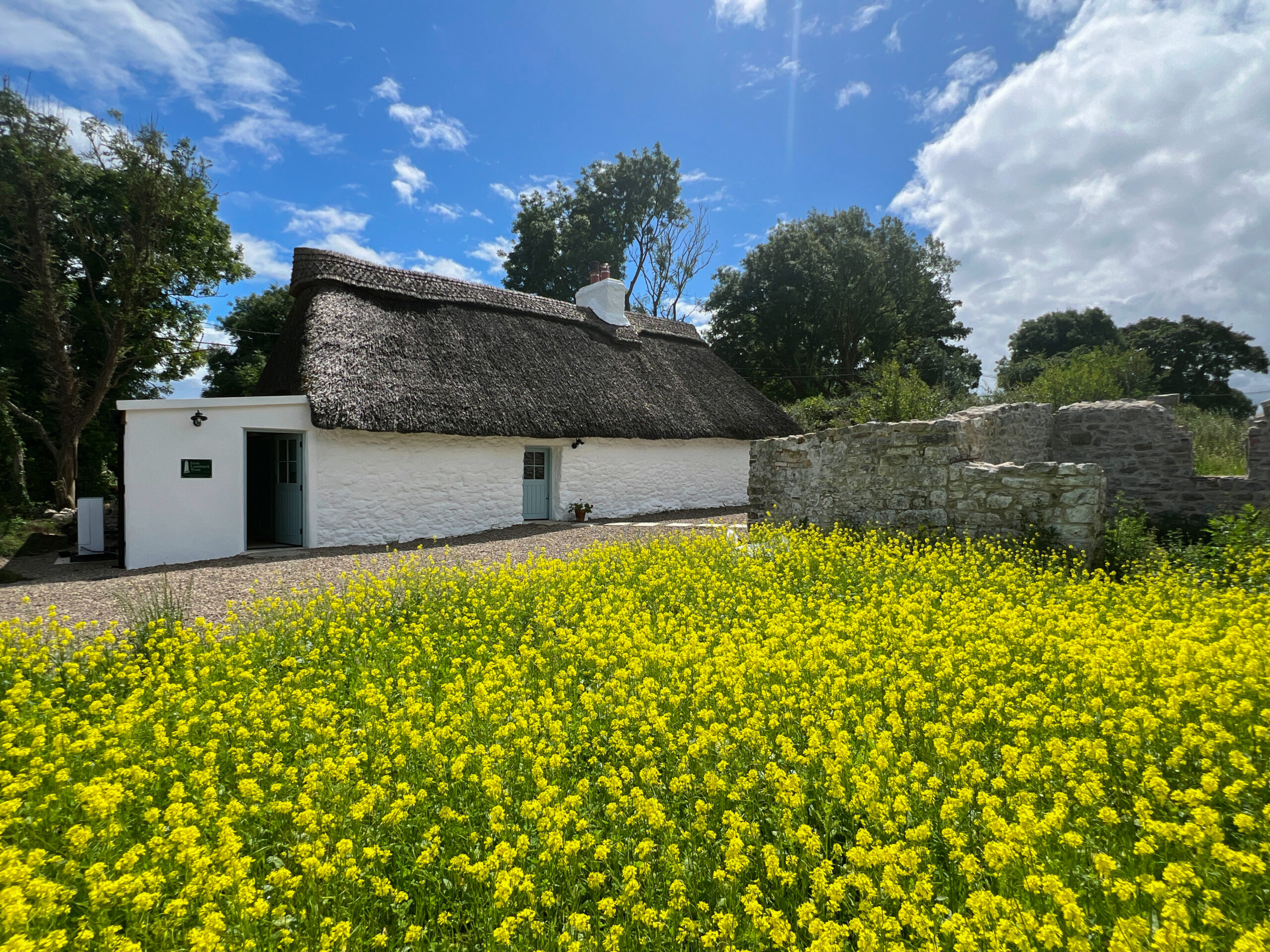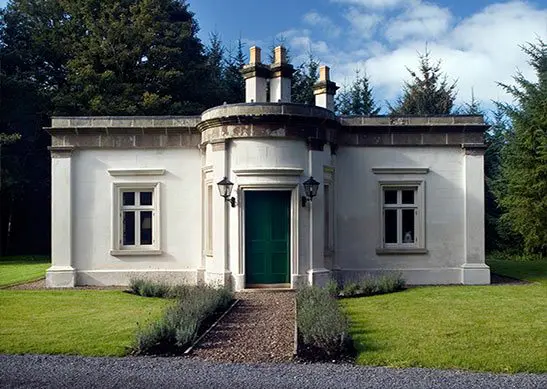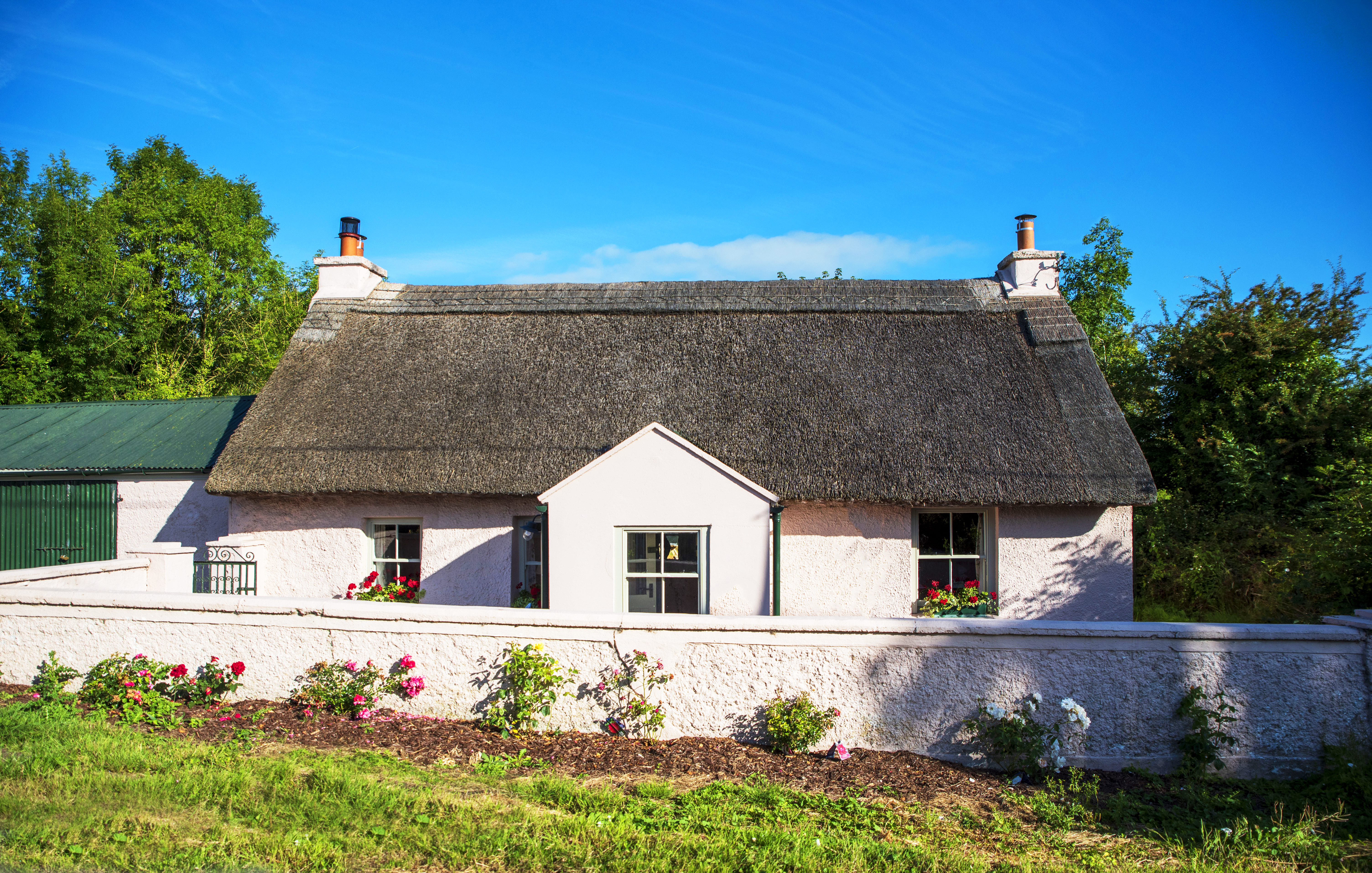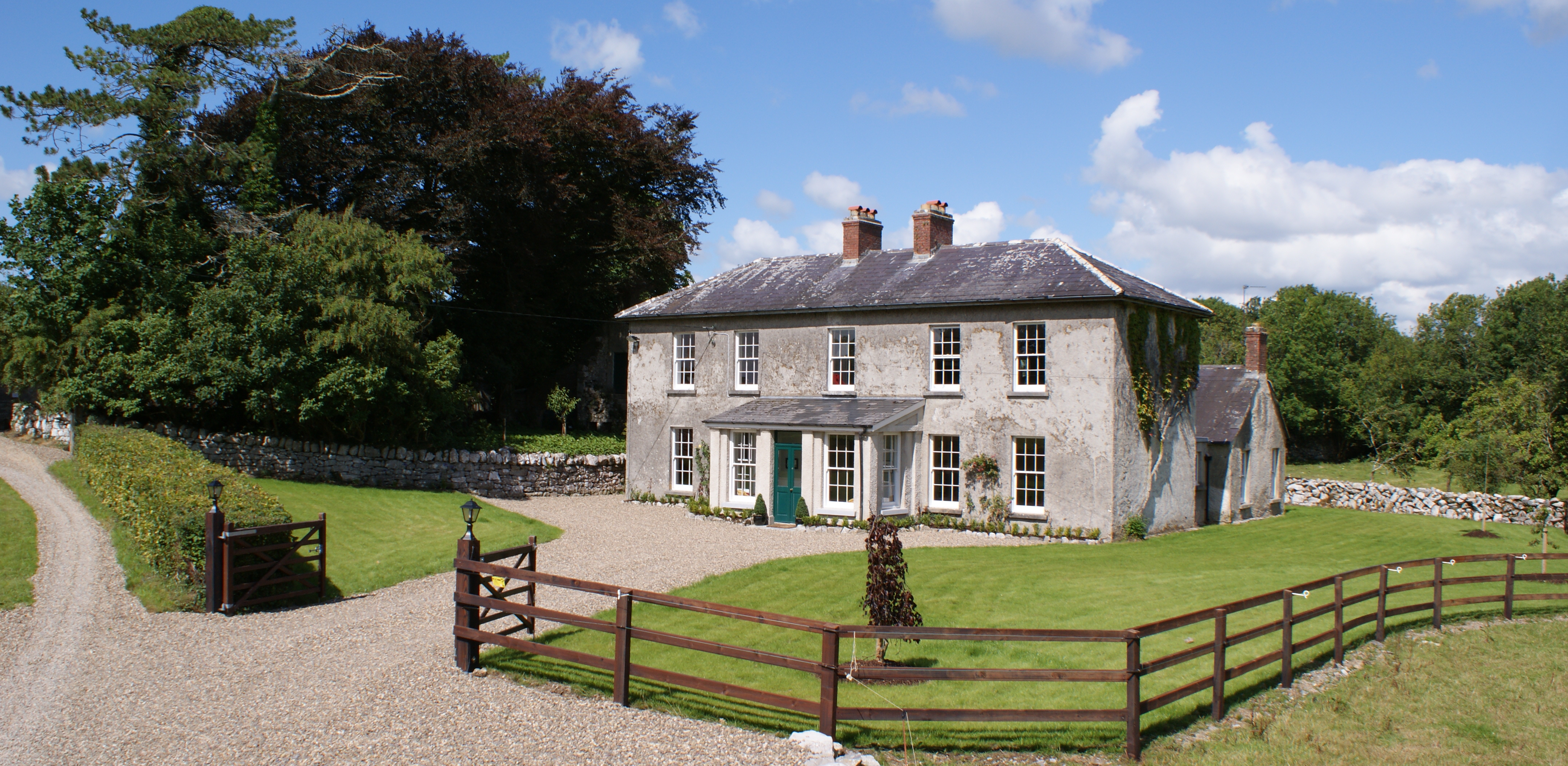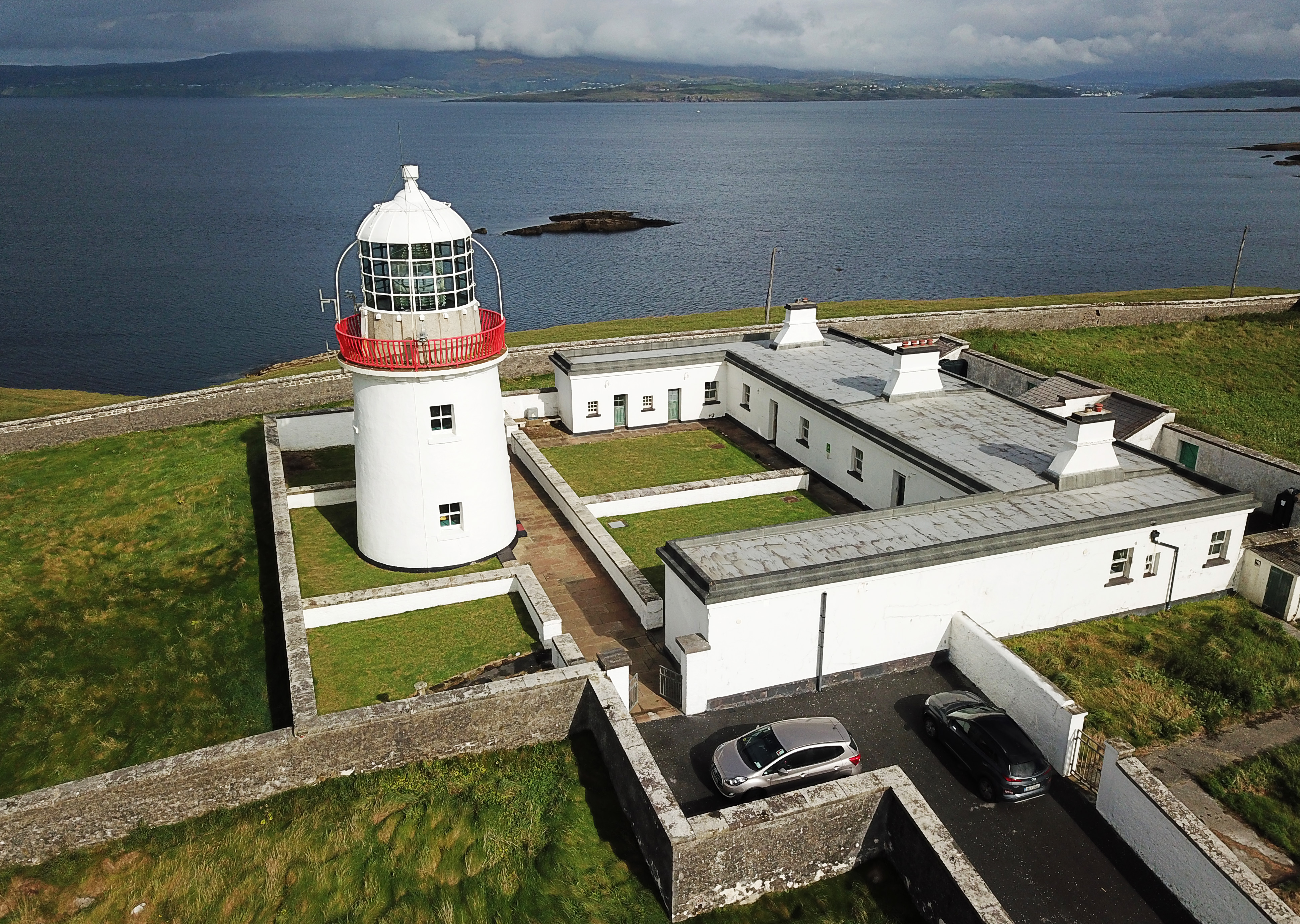Safeguarding the scenic Wicklow coastline since 1781, Wicklow Head Lighthouse is visible from miles around. The lighthouse is a well loved and valued part of the local community’s heritage and one of Irish Landmark’s most popular properties.
The restoration of Wicklow Head Lighthouse was the first project for Irish Landmark Trust. Restored in 1997, it was time to revisit the project 25 years later and prepare an in depth Conservation Report to help plan a programme of works so that the building survives for the next 25 years and beyond. The extreme location of the lighthouse on Dunbur Head was a challenge in itself with the eight sided tower exposed to everything the weather can throw on it.
Funding from the Heritage Council under the Community Heritage Grant Scheme 2021 enabled us to revisit the building and carry out an in depth Conservation Report to identify locations where deterioration of the exterior finishes was allowing water to enter the building. This Conservation Report then enabled us to prepare and plan a programme of work to address the issues.
The Report identified that the main problem was the deteriorating exterior lime render. The project architect, Gráinne Shaffrey from Shaffrey Associates, and the contractor, Damien Condon of Calyx Restoration, examined the exterior of the tower from the safety of a hoist and took samples of the existing render. Five different mortar samples were collected and sent for analysis. They were found to contain a range of interesting ingredients, many of them of local origin, including sand, silt, clay, quartz, slate, shale, pebbles of various sizes and animal hair.
The next step was a scientific trial of four different traditional lime based renders in situ on the exterior of the lighthouse to see which render performed best in this extreme location. This phase was also facilitated as part of the Heritage Council grant aided works. The south-west facade of the lighthouse was chosen and the existing render hacked off down to the stone building material. Four different lime renders were mixed using a variety of ingredients and applied to the exterior of the lighthouse. In arriving at these samples consideration was given to the mortar analysis results, in particular the historic mortar/render mixes. Further consideration was given to the particular challenges which the lighthouse poses – its exposure and condition; the performance required from the render as a weathering coat to a habitable structure, recent and current knowledge and best practice on appropriate renders for historic structures in exposed locations. Consideration was also given to finish and colour.
Render Sample 1: Hot limewash base coats application to stone; common mortar (hot lime) with brick dust, roughcast/thrown finish; hot limewash (kibble gauged with ‘cupful’ NHL 2) finish (2 coats day 1; 3 coats day 2). Local aggregates based on mortar analysis/Wexford sand grading. This sample with a hot limewash applied finish allows for a more white finish. Applying the limewash ‘hot’ enhances its durability and fixity into the render finish.
Render Sample 2: Hot limewash base coats application to stone; common mortar base with dry dash finish. Local aggregates in line with findings of mortar analysis. This sample would aim to align visually with the existing finish.
Render Sample 3: Proprietary Roman Cement finish (lime-green Roman Stucco Exterior Wall Render); one half of sample with self-finish colour, other half painted with silica paint finish (white). This proprietary material uses prompt (a French natural cement similar in characteristics to Roman Cement). Roman Cement has been used in exposed coastal situations. This sample allows for review of a white painted lighthouse as well as a more muted self-finish colour (several options available).
Render Sample 4: NHL 2 (St Astier) with hot limewash finish/NHL2 limewash (NHL 2 + 3 pints water). Wexford sand for aggregate. A more currently conventional approach, with the addition of a hot limewash finish allowing for the application of colour.
The above mixes provide a range of approaches. The trial panels will be left in place for monitoring and assessment for a minimum of six months to see which render performs the best.
